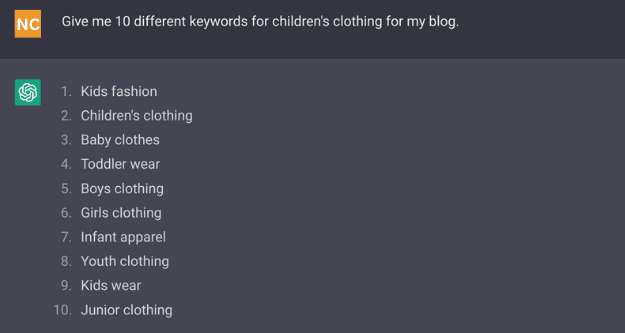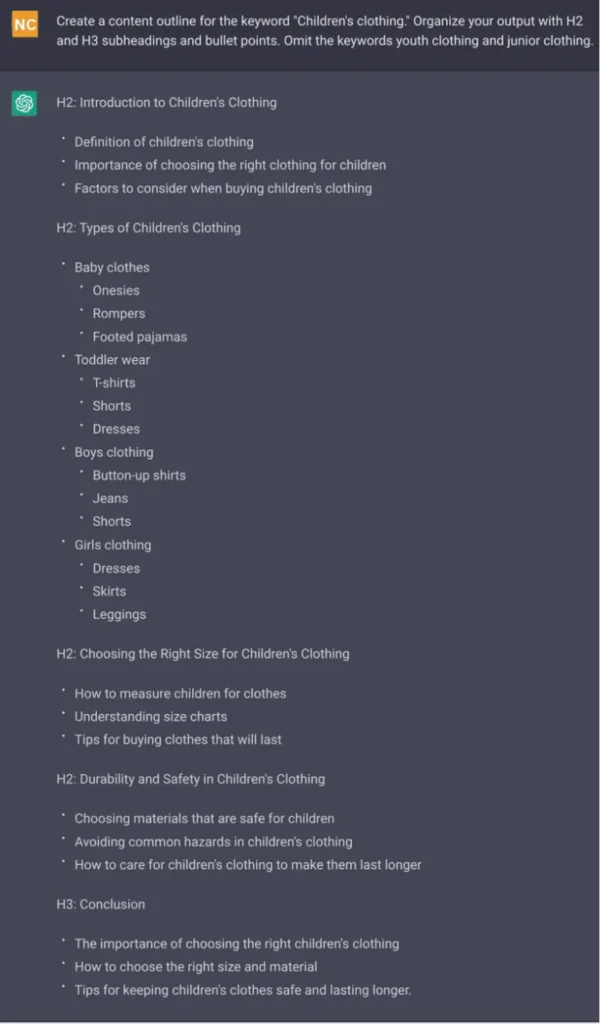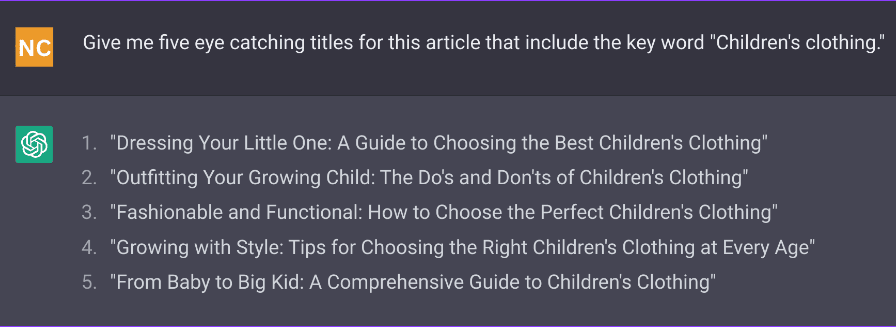If you haven’t already heard, ChatGPT is either the end of white-collar jobs or the beginning of a new era of efficiency in the workplace. ChatGPT is an easy-to-use chatbot launched in late 2022 and—depending on how you feel about Skynet—one of the most interesting things to happen in software.
So, can ChatGPT help your small business streamline writing tasks? Or, does it simply open the door for plagiarism and bias? Read on for the scoop, and learn how to use ChatGPT in your business.
What is ChatGPT?
ChatGPT is a generative language model (GLM) created by OpenAI. Put simply, ChatGPT is a chatbot that’s really good at … well, chatting.
So, how does ChatGPT work? ChatGPT learned how language works by crawling and understanding enormous amounts of text online. For example, the most recent version of ChatGPT (GPT-3) was trained using 570GB of textual data from Wikipedia, books, web texts, and other online writing. At the end of its training, ChatGPT had learned from 300 billion words.
Using this large resource of information, the chatbot responds to user prompts in a natural, coherent, and (hopefully) factual way. And as users continue sending new queries and amending the software’s responses, ChatGPT continues to learn. Over time, the responses aim to become more natural, coherent, and factual.
Just how powerful is ChatGPT? It can do some things really well. For example, it recently passed an MBA exam at Wharton College. And, it passed the Bar and the U.S. Medical Licensing Examination.
But, ChatGPT often makes mistakes. It may generate responses that are biased, nonfactual, incorrect, and otherwise confusing. And, ChatGPT may plagiarize online content to answer search queries.
Using ChatGPT for your business can be helpful. If you harness the software correctly, ChatGPT could help your small business streamline several writing tasks.
How to use ChaptGPT for your business
If you don’t have employees, you may not have time to create the most engaging copy. And let’s face it: You have a ton of responsibilities when it comes to writing. Product descriptions, blog posts, and marketing copy are hard to avoid. Bad writing that’s filled with errors can be hard for the customer to forget. This is precisely where ChatGPT can help.
Wondering how to use ChatGPT for business? There are several ways that ChatGPT can help simplify complex writing tasks.
ChatGPT can help:
- Generate product descriptions
- Create keywords for blog posts
- Draft outlines of blog posts
- Write catchy blog titles
But before you hand all of your writing tasks over to ChatGPT, you should take a moment to think about possible legal and ethical issues.
Product descriptions
Product descriptions help customers know what they’re buying and can promote consumer trust. If your business operates in a brick-and-mortar store and online (e.g., e-commerce and social media), your writing tasks can multiply quickly.
If you’re trying to write product descriptions but keep spinning your wheels, you can query ChatGPT for help.
When writing a query for ChatGPT, be as clear and specific as possible. You aren’t writing a novel, and your language doesn’t have to be pretty. So, don’t worry if you aren’t feeling very literary (that may be why you’re here after all—and that’s okay!).
Let’s look at an example to see the chatbot write a product description. The company Birdie Golf Clubs wants to promote a new sale for a high-end golf club. Birdie sends a query to ChatGPT and asks for multiple examples of a product description so they can choose the best one from the list.

Birdie Golf Clubs chooses the second product description because it sounds similar to their brand voice and asks the customer to move quickly to save money during the sale.
Blog posts
Blog posts are vital to bringing potential customers to your website. The trouble is you need to post new material frequently to make it worth your while. What exactly does “frequently” mean?
According to HubSpot, a small blog should publish three to four times a week. If you’re a marketing team of one (on top of all your other duties), publishing this often can be daunting. There’s a lot that goes into publishing helpful content—and that’s where ChatGPT can help.
ChatGPT can streamline the process, from brainstorming keywords to publishing.
Break your project into manageable chunks to get the most out of ChatGPT. For example, New Cloth, a children’s clothing company, needs to generate some blog posts for the upcoming month. To make the process more manageable, New Cloth breaks its blog post project into these steps:
- Generate keywords
- Choose a specific keyword and draft a blog outline
- Create a title for the blog post
- Write the blog post
1. Generate keywords
Keywords are the words that online users search in popular search engines. Using those keywords on your blog can help users find your content more easily. Like similar keyword tools (e.g., Semrush), ChatGPT can help generate keywords for your blog from a simple command.
Here’s an example of New Cloth asking for possible keywords for their kid’s clothing blog.

Clothing options from New Cloth range from newborn to 10 years old, so the keywords “youth clothing” and “junior clothing” aren’t needed. New Cloth can pick a specific keyword to focus on and ask ChatGPT to create an outline.
2. Choose a keyword and draft a blog outline
New Cloth wants to generate content for the next few months. So, the company decides to create a post around the keyword children’s clothing first because it’s a general topic. In the future, New Cloth can use the remaining keywords on the list to create new posts.
To start drafting a blog outline, New Cloth sends ChatGPT the following query.

Pro tip: New Cloth can use the pillar cluster model to help generate future blog posts. For example, “Children’s clothing” is a pillar blog post because it covers a broad topic. The more specific keywords included in this outline (e.g., “toddler wear” or “boys clothing”) can become posts in the future and cluster around the pillar through inbound links.
3. Create a title for the blog post
Once New Cloth has its outline, the company can choose an eye-catching title. Since New Cloth wants to select the best of multiple options, they send the following query to ChatGPT.

New Cloth decides on the title “Fashionable and Functional: How to Choose the Perfect Children’s Clothing” because it accounts for some of the key points New Cloth wants to cover in the post, fashion, and function.
4. Write the blog post
Using ChatGPT to brainstorm and plan your blog post is one thing. Depending on A.I. to write a blog post may be something different.
Yes, ChatGPT is powerful enough to write your blog post for you. But that doesn’t mean you should. There has already been backlash surrounding children’s books and financial articles written by A.I. Chances are, you don’t want that type of negative publicity for your small business.
Before you use ChatGPT to write your blog articles, here are some questions you may want to ask yourself:
- How will my customers react when they learn this post wasn’t written by a human?
- Do I have time to fact-check the article to make sure that it’s accurate?
- Will I thoroughly review the article to make sure it’s unique and not plagiarized?
- Can I edit the article to sound like my company’s brand voice?
- Is it legal or ethical to use AI-generated software and not inform the customer?
If you use ChatGPT or other A.I. tools to generate a blog post, think about informing your customers. The Federal Trade Commission (FTC) emphasizes the need for transparency when using artificial intelligence and algorithms. According to the FTC, the “…use of AI tools should be transparent, explainable, fair, and empirically sound.”
Marketing copy
Like your other writing tasks as a small business owner, marketing copy may not be in your wheelhouse. Generating marketing copy with ChatGPT is easy. But like any automated writing task, you may need to edit things to make them work best for your business.
For example, a plumbing company, Joe’s Plumbing, needs marketing copy directed to college students. Joe’s Plumbing wants the copy to reflect the company’s most popular services, so the company sends this query to ChatGPT.

Joe’s Plumbing wants to use this marketing copy for a social media post. But, the company thinks it’s too long and that “college students in the college town” is redundant. The owner decides to keep the first and last paragraphs, save the other four for another project, and omit “in the college town.”
The final marketing copy for Joe’s plumbing reads:
Are you a college student in need of a reliable and affordable plumber? Look no further! Our company specializes in providing top-notch plumbing services to college students. Our most popular services include drain flow checks, drain snaking, leak checks, and pipe winterization.
Don’t let plumbing problems ruin your college experience! Trust our team of professional plumbers to provide you with fast, reliable, and affordable service. Contact us today to schedule your appointment and enjoy a stress-free and comfortable living experience!”
Is ChatGPT accurate?
ChatGPT is accurate—most of the time. When ChatGPT presents inaccurate information or makes up facts, it is said to “hallucinate” the information. How often does ChatGPT hallucinate? ChatGPT will make up information 15% to 20% of the time.
The trouble isn’t that the software is occasionally inaccurate. The real difficulty lies in the fact that the fake information generated by ChatGPT can seem true if you aren’t paying attention. It’s presented in the same matter-of-fact way as truthful content, and excellent responses may surround the false information.
ChatGPT also doesn’t have any way to safeguard against plagiarism, at least not at the moment. If you don’t have the time to cross-check material, you may plagiarize someone else’s work without knowing.
Best practices for ChatGPT business
Using ChatGPT for your business can be a great way to streamline your writing tasks. But, your success with the chatbot depends on you.
Here are a few things to remember when using A.I. for your business:
- Set time aside to fact-check information
- Cross-check text to make sure it isn’t plagiarized
- Be transparent with your customers about the new practice
- Train the chatbot on your business and brand voice to make it even better at helping out
This is not intended as legal advice; for more information, please click here.



